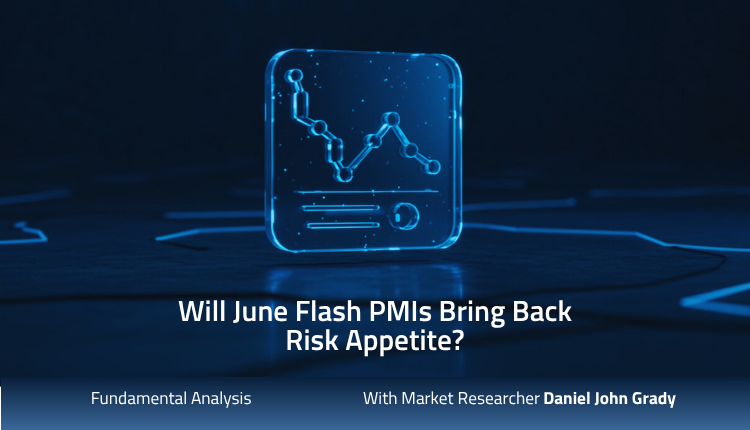
Global markets are watching trade negotiations with a certain amount of trepidation. Risk appetite has shifted towards safety, as the failure to reach trade deals is seen as likely to harm economic growth. This is particularly concerning for the Euro, alongside the usual commodity currencies. The green shoots of economic recovery in the EU could be in danger if there is a significant disruption in trade.
To help address some of the market’s questions about the economy’s outlook, flash PMIs released on Thursday could provide insight into growth expectations. A key concern is that higher prices resulting from tariffs will lead to depressed consumer demand. Purchasing managers are ideally positioned to notice if a price increase is being felt and whether it can be passed on to consumers.
Euro in Focus
The Euro has been gaining substantially this year, mainly due to tariffs. Investors seem to believe that higher costs in the US would slow its economy down. Meanwhile, Europe could be a beneficiary of excess supply, which would lower input costs just as governments are increasing defence and infrastructure spending.
The EU has resisted imposing retaliatory tariffs for now, leaving the US bearing the cost of the increased tariffs. However, if a deal is not reached before the August 1 deadline, the EU could implement a series of tariffs that could harm its economy. That eventuality could play a role in whether the Euro keeps rising in the medium to long term.
What to Look Out For
Japan’s June Manufacturing PMI is expected to remain barely in expansion at 50.2 compared to 50.1 in May. Trade concerns have been an issue for Japan’s economy, of course. But high inflation and the threat of the BOJ raising rates again could also provide further headwinds.
France is the first of the major European economies to report, with its Manufacturing PMI projected to stay mired in contraction at 48.4. However, that would represent an improvement from 48.1%, which was the first decline this year. Weak demand was seen weighing on the sector’s outlook.
Next is the German June Manufacturing PMI, which is forecast to rise to 49.4 from 49.0 previously. May’s reading was the highest since early 2022, as manufacturers increased production in response to healthy demand from both domestic and international markets. Average prices paid to suppliers also fell, mainly due to increased competition amid US tariffs.
UK June Manufacturing PMI is expected to improve to 48.0 from 47.7 previously, as businesses face the effect of higher labour costs and taxes. The prospect of lower interest rates if the BOE gets around to easing might help the UK economy, but weigh on the pound.
US June Manufacturing PMI is projected to stay in expansion at 52.5, but decline from 52.9 in May. The prior reading showed the fastest growth in the manufacturing sector in over three years, driven by new export orders despite the imposition of tariffs.
Trading the forex market requires extensive research, and that’s what we do best.
The post Will June Flash PMIs Bring Back Risk Appetite? appeared first on Orbex Forex Trading Blog.
